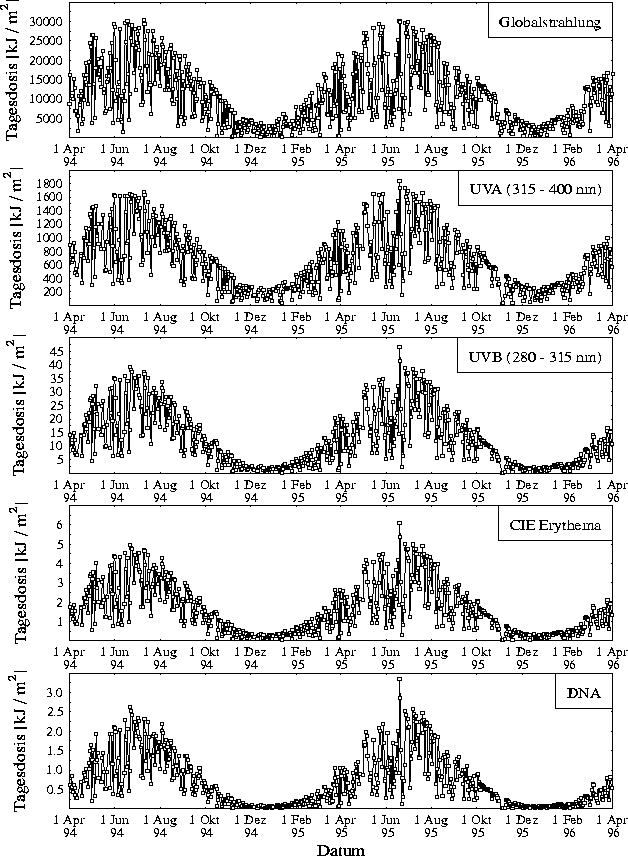Global spectral UV irradiance

The extraterrestrial irradiance of the Sun at the location of the Earth
(black) is effectively absorbed in the Earth's atmosphere by ozone
(blue), so that only a small fraction reaches the Earth's surface
(green).

The small fraction of solar radiation which reaches the Earth's
surface in the UVB (280-315 nm) is
photochemically and photobiologically very efficient, due to its high
photon energy. As an example, the left graph shows a
solar spectrum (top) and its UV part (bottom). The right graph
shows the same spectral ranges, but weighted with the DNA damaging
potential of the radiation. It is obvious that the UVB contributes
the major part to the biological action, although only a small
fraction of it is transmitted through the Earth's atmosphere.

Time series of daily integrated spectral irradition at
Garmisch-Partenkirchen (47.48°N, 11.07°E),
represented by 5 different spectral weightings: total ("shortwave") irradiance,
UVA (315-400 nm), UVB (280-315 nm) as well as erythemally and DNA weighted
irradiances. The latter two are biologically weighted quantities,
reflecting the sensitivity of the human skin for sunburn (Erythema) and
the damage of molecular DNA. The high natural variability is introduced by
the diurnal and annual cycle of the solar zenith angle and the variability
of cloudiness, total ozone, and surface albedo. Approximately 100 spectra
were measured each day during the 2 year's period, resulting in a total of 60,000
spectra.



